Efficient and Cost-Effective Solutions
Save money and time by utilizing TOPShipping’s expertise in air, sea, and land freight. Due to our customized services, your merchandise will get to its destination as quick and effectively as possible.
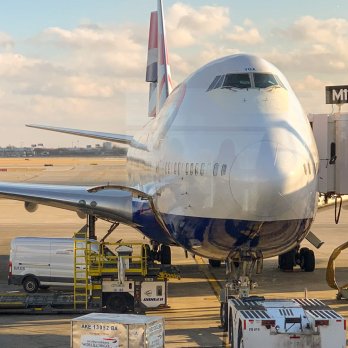
 Air Freight
Air Freight

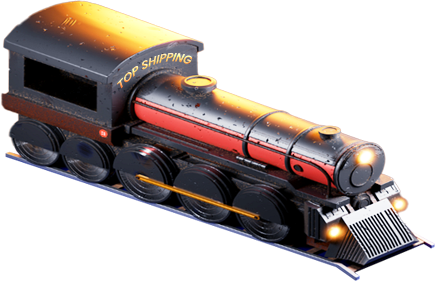 Rail Freight
Rail Freight
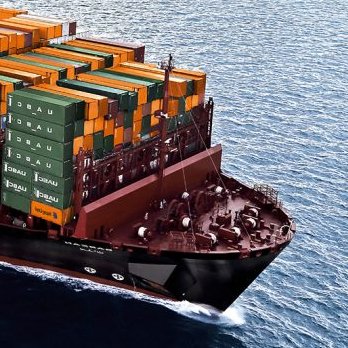
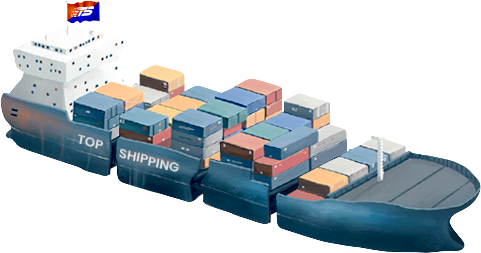 Sea Freight
Sea Freight
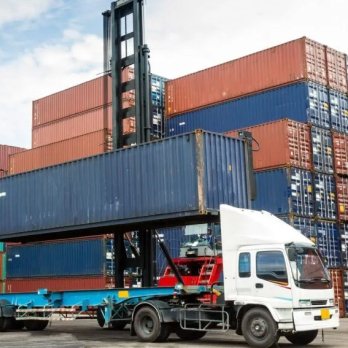
 Truck transportation
Truck transportation
Click this link All Services to explore all of our offerings!
Table of Contents
The trade relationship between China and Canada is of critical importance to the global economy. China, being one of the world’s largest manufacturing hubs, provides Canadian businesses with access to a wide variety of products at competitive pricing. From electronics and textiles to machinery and consumer goods, businesses from across Canada need these imports from China to continue meeting customer demand and remaining competitive within their market
Efficient shipping from China to Canada is more than a logistical requirement; it is a strategic advantage. It could significantly cut costs, lessen transit times, and deliver on time with the sole aim of maintaining customer satisfaction and, as such, business growth.
Through partnering with a logistics company that is reliable, like Topshipping, it can help businesses go through the complexities of international trade, including customs clearance and freight management. With the right solutions in place, companies can help streamline supply chains, enhance efficiency, and seize opportunities in today’s fast-moving global market.

From China to Canada, TOPShipping will provide everything that you might need to know, along with the services for international shipping, in the most efficient and cost-effective way. Here is why TOPShipping is your best choice for all of your logistics needs:
Save money and time by utilizing TOPShipping’s expertise in air, sea, and land freight. Due to our customized services, your merchandise will get to its destination as quick and effectively as possible.
Working with a good Chinese freight forwarder like TOPShipping has many advantages concerning language and geography. This puts us in an excellent position to arrange your overseas transport effectively with a minimum of hassle.
The biggest advantage with TOPShipping is the speed at which this works. At our end, we have our team in constant contact with your suppliers to ensure that even a minute detail is informed to you. In case something goes wrong, it is sorted out as soon as possible to ensure there is no delay in your supply chain.
If you are purchasing goods from a number of suppliers, then consolidation is critical. TOPShipping offers consolidation services from any port of origin in China by merging your goods, which come from a variety of suppliers, into one shipment for delivery to you together, saving time and reducing costs.
It is very important to understand the delivery timeline. Sea freight takes longer compared to air freight, which is faster but might cost a little more. TOPShipping helps you assess your time constraints and picks out the best shipping method for you, including express options in cases where deliveries need to be made urgently.
TOPShipping is a highly experienced and reputable Chinese freight forwarding company. Due to good customs, competitive pricing, and on-time delivery records, it enjoys an excellent reputation in the eyes of top shipping lines and airlines.
TOPShipping has been entrusted by many clients with sending goods efficiently and on schedule to Canada. From deep-rooted knowledge about shipping processes, amply backed by relevant years of experience in the field, shipments are handled with great caution and professionalism.
TOPShipping offers a range of shipping services, including DDP shipping, freight shipping, and specialized services originating from Shenzhen. With TOPShipping, one is guaranteed that the goods are in capable and secure hands.

Experience: In-depth knowledge of shipping logistics between China and Canada.
Reliability: Proven track record of timely and safe deliveries.
Full-range Services: Consolidation to express shipping; name it, and we will cover it.
Customer satisfaction and peace of mind remain foremost in our concerns.
Ship with TOPShipping for a guarantee of a difference in the realms of efficiency, reliability, and excellence of service while sending cargo from China to Canada. Your goods deserve nothing but the best, and TOPShipping is here to help you achieve that.
When shipping goods from China to Canada, understanding Incoterms (International Commercial Terms) is crucial for a smooth and cost-effective transaction.
Incoterms are globally recognized rules that define the responsibilities of buyers and sellers in international trade, specifying who is responsible for the costs, risks, and logistics at each stage of the shipping process.
Selecting the right Incoterm helps avoid unexpected expenses, delays, and misunderstandings between both parties.
Below is a detailed guide to the most commonly used Incoterms for shipping from China to Canada:

Choosing the right Incoterm depends on several factors:

At Topshipping, safe delivery of your goods from China to Canada is one of the main priorities. Proper packaging will help avoid damage while shipping and ensure that your shipment will arrive in perfect condition. Following are some of our top recommendations:
Select boxes, crates, or containers that are of high quality to survive the rigors of international shipment. Further protection could be provided by sturdy tape and cushioning with bubble wrap or foam.
To each package, affix an address label of the recipient, handling instructions-such as “Fragile” or “This Side Up”-and any shipping codes that may be required. This aids the carriers in handling your shipment appropriately.

Incoterm | Seller’s Responsibilities | Buyer’s Responsibilities |
EXW | Goods availability at seller’s premises | All transportation and logistics from seller’s location |
FOB | Delivery to port | loading onto vessel |
CIF | Cost | insurance |
DAP | All costs to a specified destination (excluding duties) | Import customs |
DDP | All costs including import duties and taxes to specified destination | Receiving goods at the agreed location |
Wrap goods onto pallets when shipping in large quantities, as this improves stability. Hold items in place using shrink wrap or straps to prevent shifting of items during transit.
Use waterproof materials and desiccants in order to protect the goods against moisture or humidity, especially on long sea freight journeys.
With Topshipping, we help walk you through best packaging practices to ensure that your goods remain intact and safe throughout their journey. We are the trusted choice for handling your logistics with great care and accuracy!
When shipping goods from China to Canada, ocean freight is a cost-effective and reliable option, particularly for large shipments. Understanding the differences between Full Container Load (FCL) and Less than Container Load (LCL) shipping can help you choose the best method for your needs.

FCL shipping means your goods occupy an entire container, either 20 feet or 40 feet long. This method is ideal for high-volume shipments. Here are the key advantages of FCL:
LCL shipping is used when your goods do not fill an entire container and are shipped along with other cargo. This method is suitable for smaller shipments. Key points about LCL include:

Air freight doesn’t have as many options as sea shipping. Because the two classes that are intended for this system are responsive to the needs of the people and do not require a new and different class. But it should be noted that most users choose the transport model depending on their wants and demands. For example, the port to port model is suitable for people who have easy access to the airport and can take their packages from the airport instead of the warehouse. But other people may not have access to the airport and would rather have their goods from the warehouse.
Air freight is an excellent choice for shipping goods from China to Canada, especially when speed is a priority. It offers several benefits, including fast transit times, reliable scheduling, and the ability to handle a wide range of goods. Here’s a detailed overview of air freight services and considerations for shipping from China to Canada.
Air cargo shipping costs are a significant consideration when transporting goods from China to Canada.
These costs can vary based on several factors, including the weight and volume of the shipment, the specific routes, the type of goods, and the service level chosen.
Here’s a detailed overview to help you understand and estimate air cargo shipping costs.

Weight and Volume: Costs are calculated based on the chargeable weight, which is either the actual weight or the volumetric weight, whichever is higher. The volumetric weight is determined by the formula:
Volumetric Weight (kg)=Length (cm) × Width (cm) × Height (cm)6000Volumetric Weight (kg)=6000Length (cm)
× Width (cm) × Height (cm)
Shipping Routes: Direct flights typically cost more than flights with stopovers. Major airports like Beijing, Shanghai, and Guangzhou in China to Toronto, Vancouver, and Montreal in Canada often have more competitive rates due to high traffic volumes.
Type of Goods: Special handling requirements for perishable, hazardous, or high-value goods can increase costs.
Service Level: Express services cost more than standard air freight services but offer faster delivery times.
Seasonal Variations: Prices can fluctuate based on demand. Peak seasons, such as before major holidays, often see higher rates.
As of recent data, air cargo shipping rates from China to Canada can range approximately from $4 to $10 per kilogram. Here’s a more detailed breakdown:
These rates are indicative and can vary based on the factors mentioned above.
Suppose you have a shipment with an actual weight of 500 kg and the following dimensions: 120 cm (L) x 80 cm (W) x 100 cm (H).
The transit time for shipping goods from China to Canada varies depending on the mode of transportation chosen. Here’s a detailed overview of the typical transit times for air freight, ocean freight, and express shipping.

Standard Air Freight: Air freight is the fastest mode of shipping and is ideal for urgent and high-value goods.
Express Air Freight: Express services provided by courier companies like DHL, FedEx, and UPS offer the quickest delivery times.
Ocean freight is a more cost-effective option, particularly for large and heavy shipments, but it takes longer than air freight.
FCL (Full Container Load): Ideal for large shipments that can fill an entire container.
LCL (Less than Container Load): Suitable for smaller shipments that don’t require a full container.
Express shipping services provided by international couriers are the fastest option but come at a higher cost.
Shipping costs from China to Canada can vary widely based on the mode of transportation, the size and weight of your shipment, the specific routes, and any additional services required. Here’s a comprehensive guide to help you estimate these costs.
Standard Air Freight
FCL (Full Container Load)
LCL (Less than Container Load)
Courier Services (DHL, FedEx, UPS)

Shipping delays from China to Canada can occur due to various factors, but it’s essential to note that delays are not uncommon in international shipping and can happen regardless of the origin or destination. Here are some factors that can contribute to shipping delays from China to Canada:
Events such as the COVID-19 pandemic, natural disasters, geopolitical tensions, and trade disputes can disrupt global supply chains, leading to delays in shipping operations worldwide.
Congestion at ports in China or Canada can cause delays in the loading and unloading of cargo ships, especially during peak seasons or when there is a surge in shipping volumes.
Stringent customs procedures and inspections at ports of entry can lead to delays in the clearance of goods. Documentation errors or incomplete paperwork can also contribute to delays in customs clearance processes.
Delays can occur during transit, whether by air or sea, due to adverse weather conditions, mechanical problems, or logistical challenges.
Increased shipping volumes during peak seasons, such as the holiday season, Chinese New Year, or other major festivals, can lead to congestion and delays at ports and airports.
Changes in trade regulations, tariffs, or compliance requirements can impact shipping processes and lead to delays as businesses adjust to new regulations.
Issues with shipping carriers, such as vessel schedule changes, route diversions, or capacity constraints, can cause delays in shipments.
Strikes or labor disputes at ports, warehouses, or transportation facilities can disrupt operations and lead to delays in shipping.
While delays can be frustrating, it’s essential to work closely with your freight forwarder or shipping provider to monitor the status of your shipment and address any issues promptly. Proper planning, clear communication, and proactive management of logistics can help mitigate the impact of delays and ensure timely delivery of goods from China to Canada.
Some of the top shipping routes from China to Canada include:
This route connects one of China’s largest ports, Shanghai, with Vancouver, one of Canada’s busiest ports on the west coast. It serves as a crucial gateway for goods flowing between China and Western Canada.
Shenzhen, located in Guangdong Province, is a major manufacturing hub in China. Shipping routes from Shenzhen to Toronto, one of Canada’s largest cities and economic centers, handle a significant volume of cargo, including electronics, textiles, and machinery.
Guangzhou, the capital of Guangdong Province, has a well-developed transportation network and serves as a key export hub. Shipping routes from Guangzhou to Montreal, a major port on the east coast of Canada, facilitate the movement of goods between China and Eastern Canada.
Ningbo, located in Zhejiang Province, is a major port city with extensive shipping connections. Shipping routes from Ningbo to Vancouver provide efficient access to the Canadian market, particularly in Western Canada.
Qingdao, situated in Shandong Province, is a significant port city with extensive shipping facilities. Shipping routes from Qingdao to Montreal offer a vital link between China and Eastern Canada, supporting trade in various commodities.
These shipping routes connect key ports in China with major ports in Canada, facilitating the movement of goods between the two countries. They handle a wide range of cargo, including consumer goods, electronics, machinery, textiles, and raw materials, contributing to bilateral trade and economic cooperation between China and Canada.

Shipping from | To | Price | Flight Time | Distance | Type | Weight |
Shanghai | Vancouver | $1 | 950 | 11 hours 43 mins | 9028.24 km 5609.89 miles | AIR port to AIR port |
Ningbo | Vancouver | $1 | 555 | 11 hours 17 mins | 9173Km5700 miles | AIR port to AIR port |
Shenzhen | Vancouver | $1 | 389 | 12 hours 34 mins | 10263 km6377 miles | AIR port to AIR port |
Shanghai | Montreal | $1 | 304 | 13 hours 53 mins | 11376 km7069 miles | AIR port to AIR port |
Ningbo | Montreal | $1 | 293 | 14 hours 03 mins | 11526 km7162 miles | AIR port to AIR port |
Shenzhen | Montreal | $1 | 272 | 15 hours 06 mins | 12424 km7720 miles | AIR portto AIR port |
Shanghai | Toronto | $1 | 279 | 13 hours 57 mins | 11444 km7111 miles | AIR port to AIR port |
Ningbo | Toronto | $1 | 105 | 14 hours 07 mins | 11587 km7200miles | AIR port to AIR port |
Shenzhen | Toronto | $977 | 15 hours 14 mins | 12535 km7789 miles | AIR port to AIR port | 200 kg |
When it comes to shipping from China, cost often takes precedence as the most critical factor, especially for small shipments. Here’s a more optimized version:
When importing small goods, such as product samples, opting for freight shipping might be excessive in terms of both cost and time. Instead, consider the following options:
Mailing services prove to be the most economical option for small shipments of lightweight and compact products. China Post offers various mail options:
Before making a decision, carefully examine each option and compare it with courier charges. Generally, the heavier the parcel, the more likely a courier (express freight) will be cost-effective. While mail is budget-friendly, it typically entails a longer wait time.
Utilizing an international courier like DHL, UPS, or TNT is often more reliable and faster than traditional mail services.
As a rule of thumb, express freight, priced at approximately $5 per kilo, stands as the most economical shipping mode for packages or small shipments weighing up to about 150 kg. However, be cautious, as some couriers may impose exorbitant charges for non-registered customers.
By carefully considering your options and comparing costs, you can select the most cost-effective and efficient shipping method for your small packages from China to Canada.

Navigating the complexities of shipping costs and rates from China to Canada can be difficult, but with the appropriate knowledge and strategy, you can make informed decisions to improve your logistics operations. Let’s go into the details and look at the differences between air freight and sea freight, as well as factors to consider when deciding which is the most cost-effective.

By carefully considering these factors and understanding the dynamic interplay between cost, speed, and shipment size, you can make informed decisions to optimize your shipping strategy from China to Canada. Whether opting for air freight or sea freight, a strategic approach grounded in comprehensive analysis will help you achieve cost-effective and efficient logistics solutions tailored to your business needs.
When it comes to shipping from China to Canada, sea freight stands out for its longer lead times compared to air freight, typically ranging from 30 to 40 days for a door-to-door shipment. Several factors contribute to this extended duration:
Despite the longer lead times inherent in sea freight, businesses often opt for this mode of transportation due to its cost-effectiveness for larger shipments and less time-sensitive cargo. By understanding the dynamics of sea freight logistics and accounting for potential delays, businesses can effectively plan and manage their supply chain operations from China to Canada.
After money, time is one of the most important factors that some people care about. It is your right to prioritize your money and time and transport your products by sea. But remember, shipping by air or air freight from china to canada is very special and cannot be ignored.
At the same time, sea freight from China to Canada is one of the lowest systems. But In fact, you will benefit more if use sea transportation. In this part, we want to talk about sea shipping time and which one is a better choice.

LCL means your goods do not fill a whole container and will be sent forward with other boxes. Note that when you ship LCL, your goods will need to be connected at the China port and deconsolidated at the Canada port. That’s why LCL shipping takes a few days longer than the Full container method. And so there are so many reasons that shipping take a lot of time
Full container time or FCL, determines your goods fill a complete container, either 20 ft or 40ft long. If you are shipping at a high volume, you’ll save time by shipping full container.
Generally, Sea freight from China to Canada takes 29-33 days but it is the most affordable if you can wait.
Have you ever ask yourself how long will it take to ship from China to Canada? As we said before, your shipment’s transit time will be affected by location, load size, and season, etc. Look at the table below. As you can see, your shipping time and method are completely different depending on other factors.
For example, Full Container or FCL method and port to port takes more time and takes between 50 and 55 days to arrive. But in contrast, the door-to-door method takes less time and is more time-efficient.
But it is clear from the table that the method Less Container or LCL method takes less time than the FCL mode and is the best choice for the company or people who care about time. Remember to consider your money and time in shipping from China to Canada.
Because sea transport has its own set of difficulties and needs more attention than air freight. Because pirates exist and the company you choose should protect your money, your time, your goods from potential dangers.
There are fast LCL services that can compete with air transportation for time and are a lot more economical. This is due to various reasons, including ships are going faster, canals upgraded, changes to ocean tracking, and a much more competitive shipping market.
Some shipping companies are now producing specific sea services, with guaranteed delivery days, actually faster than full container method. So, if air transit times are usually 5-7 days; Compare this, express LCL shipment can take as little as 8 days.

Sea freight from China to Canada is a different process like any other system. Once you have selected the type of shipment depending on the shipping cost and time, you should go through the process to know how your goods will be delivered to you or your target audience.
The sea shipping process is generally the same, but it may vary depending on your situation and choice. Each of these processes is important and many people are involved in planning and executing them. So Don’t worry and give your goods safely to professionals.
To familiarize you with the process, we have provided 7 items that a product goes through to reach its target audience:
The first action involves moving the products’ freight from shippers to the forwarder’s premises. Products are ordinarily transported by sea, rail, air, or a combination of these.
This process is a type of official regulatory involving the submission of original and needed documents to the concerned officials.
This process covers all physical handling, examination, and packing of the cargo; at the supplier warehouse. This is coordinated by the sea forwarder.
This process meets the required timeline for shipments, freight forwarder schedules the shipping line for transportation. This step not only includes costs involved in shipping from port-to-port but also levied overcharges like currency adjustment factor, exchange prices, etc.
This process can start even before the arrival of cargo. This clearance is presented by the customs house broker and will be appointed by the consignee.
This condition involves shipping and unloading of cargo from port to destination wareroom.
The final process is the actual delivery of the goods to the receiver and finally to the consumer.

For shipping from China to Canada, consider using popular couriers like FedEx, UPS, DHL, or TNT for quick and reliable delivery. You can contact our sales to get the best rates without without needing a formal quote. Before committing to large contracts with suppliers, try a trial shipment to test product sales and estimate ongoing freight costs. This helps you make informed decisions while keeping the process simple and efficient.
Before everything, you have to know that China has 2000 ports that 130 of them are open to international ships.
The major ports, available for sea freight include:
Dalian – Beihai – Lianyungang – Shanghai – Dandong – Fuzhou – Guangzhou – Haikou – Hankou – Huangpu – Jiujiang – Nanjing – Nantong – Shenzhen – Ningbo – Qingdao – Weihai – Qinhuangdao – Rizhao – Sana – Yangzhou – Shantou – Tianjin – Venuzhou – Xiamen – Yantai and Zhejiang
There are 6 main seaports in Canada and It is necessary to recognize Canadian seaports such as:
Taxes and duties are two important things that happen to any carrier. In fact, even if you plan to travel, you have to pay taxes and duties and not just for shipping. It should be noted that different taxes and duties should be considered for each person because they carry different types of products and a diverse volume of goods.
At Topshipping, we understand that customs and import duties can be complex shipping from China to Canada. We make sure your shipment is in compliance with all regulations through our team, preparing all the necessary documentation like a bill of lading, packing list, commercial invoice, and certificate of origin when required.
We can also help classify your merchandise with the Harmonized System (HS) code, which is necessary for identifying the duties and taxes that apply. Import duties in Canada depend on the type of good, its value, and country of origin; a 5% GST usually comes into play, plus any provincial taxes.
With Topshipping, you can rely on us in smoothing the customs process, thereby preventing avoidable delays and ensuring that your goods reach their destination on time. The expertise of customs clearance and freight management enables your business to be busy growing while we attend to the complexities associated with international trade.
We at Topshipping know what it takes to provide legitimate logistics, so here are some tips that can help you make the best choice. Choosing a freight forwarder means smooth and cost-effective shipping.
A freight forwarder that has extensive experience in international shipping, especially on routes between China and Canada, will not be surprised by any problem that arises. He will know how to handle complex logistics, customs regulations, and other unexpected challenges with ease.
With confirmed expertise at Topshipping, committed support, and competitive pricing, we are trusted for businesses shipping from China to Canada. Let us handle the logistics while you grow your business.
Shipping from China to Canada requires meticulous planning and organization. Understanding legislation and customs procedures is crucial to avoid delays and ensure smooth delivery.
Skilled freight forwarders can assist in navigating these challenges and streamlining the shipment process. Regardless of distance or potential barriers, businesses can successfully transport goods from China to Canada with proper planning and communication.
Stay updated on shipping policies and continuously optimize logistics strategies for efficient cross-border trading. Partnering with a reputable logistics provider can simplify your international shipping needs.
Discover why we’re the TopShipping company with our specialized Shipping From China to US solutions. Navigate to our services to ensure seamless delivery and unparalleled reliability.
Air freight is the fastest option, with shipments possible 24/7, ensuring delivery within days.
Sea freight is the most cost-effective option for bulk shipments.
Use your tracking code provided by your carrier. Enter it into the carrier’s tracking tool, click “Track Package,” and access real-time updates.
Yes, insurance is legally required. Shipload insurance protects your goods from loss, damage, or theft during transit.
We ensure delivery in 3–7 days, including time for customs clearance, offering swift and reliable services.
We provide transparent, competitive quotes based on shipment size, weight, and service requirements, ensuring value for money.
Certain items are restricted by regulations in China and Canada. We guide you through these requirements to ensure compliance and a seamless process.
Key documents include a commercial invoice, packing list, and Air Waybill (AWB). We assist with preparation and verification to prevent customs delays.

With years of experience in logistics and freight forwarding, the author is passionate about making shipping smoother and more efficient.
As a leader at TopShipping, they’ve developed a deep understanding of supply chain management, international shipping rules, and creative logistics solutions. They’re driven by a desire to help businesses succeed by delivering reliable, customer-focused services.
Over the years, they’ve also shared their expertise by writing for various industry publications, offering practical tips and insights on the latest trends in logistics. Thanks to their leadership, TopShipping has become a trusted name for companies looking for hassle-free global freight solutions.

